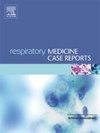超声引导下经支气管低温活检的工作通道可能提高安全性和有效性
IF 0.7
Q4 RESPIRATORY SYSTEM
引用次数: 0
摘要
支气管超声(EBUS)引导下的经支气管低温活检(TBCB)是一种用于肺门和纵隔病变活检的新方法。传统的冷冻活检需要同时将冷冻探头和EBUS镜从气道中取出,导致对活检部位的观察和止血的应用延迟,这可能导致并发症,特别是出血的风险增加。此外,在冷冻探针的重复传递过程中,重新识别病变是耗时的。我们开发了一种在EBUS-TBCB期间通过工作通道直接收集的新方法。我们在局部麻醉下进行了手术,没有插管。EBUS-经支气管吸针后,将冷冻探针通过穿刺道导入目标病变,实时观察EBUS。冷冻时间长达4秒,使冷冻标本能够通过工作通道。将EBUS镜保留在气道内,可以立即观察活检部位,并立即使用EBUS球囊吸引和止血,即使不插管,也可以更安全地进行冷冻活检。然后就可以进行下一次冷冻了。在我们的两个代表性病例中,我们分别用3个和4个冷冻标本进行了明确的诊断,手术时间分别为2.2和3.0分钟。两例患者均出现轻度出血。本文章由计算机程序翻译,如有差异,请以英文原文为准。
Endobronchial ultrasound-guided transbronchial cryobiopsy through a working channel potentially improving safety and efficacy
Endobronchial ultrasound (EBUS)-guided transbronchial cryobiopsy (TBCB) is a novel method for the biopsy of hilar and mediastinal lesions. Conventional cryobiopsy requires simultaneous removal of the cryoprobe and EBUS scope from the airway, resulting in delayed observation of the biopsy site and application of hemostasis, which may lead to an increased risk of complications, especially bleeding. Moreover, during repeated passes of the cryoprobe, re-identification of the lesion is time-consuming. We developed a novel method for direct collection through a working channel during EBUS-TBCB. We performed the procedure under local anesthesia without intubation. After EBUS-transbronchial needle aspiration, the cryoprobe was introduced into the target lesion through the puncture tract for real-time EBUS visualization. A freezing time of up to 4 s allowed the cryobiopsy specimens to pass through the working channel. Retaining the EBUS scope within the airway allowed immediate observation of the biopsy site, and to immediately suction and apply hemostasis using an EBUS balloon, which led to safer cryobiopsy even without intubation. The next cryopass could then be performed. In our two representative cases, we made a definite diagnosis with three and four cryobiopsy specimens, with procedure lengths of 2.2 and 3.0 min, respectively. Only mild bleeding was observed in both cases.
求助全文
通过发布文献求助,成功后即可免费获取论文全文。
去求助
来源期刊

Respiratory Medicine Case Reports
RESPIRATORY SYSTEM-
CiteScore
2.10
自引率
0.00%
发文量
213
审稿时长
87 days
 求助内容:
求助内容: 应助结果提醒方式:
应助结果提醒方式:


